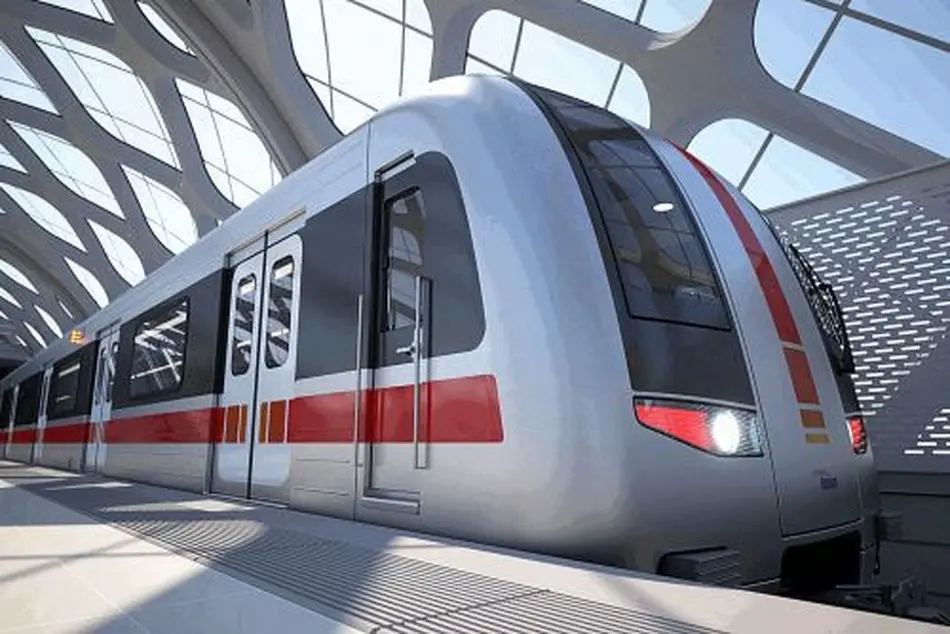Intelligent, connected trains are only a decade away – DigiIntelligent, connected trains are only a decade away – Digi
Rail passengers increasingly expect to be able to use their devices while travelling by train. But behind the scenes, a combination of hardware and software infrastructure is required in order to give customers fast and stable connections while travelling at speed, either through onboard train WiFi or new harnessing 5G cellular networks.

Rail passengers increasingly expect to be able to use their devices while travelling by train. But behind the scenes, a combination of hardware and software infrastructure is required in order to give customers fast and stable connections while travelling at speed, either through onboard train WiFi or new harnessing 5G cellular networks.
Steve Mazur, business development manager at industrial Internet of Things (IoT) technology company Digi, speaks to Railway Technology about the regulatory environment driving the push towards improving connectivity across US railroads.
Although Mazur looks to Europe for leadership in developing connected rail networks, he notes that US authorities are looking to push greater connectivity and responsibility from rail providers – which US-based Digi is well-placed to take advantage of with its market-leading rail-specific IoT router.
Patrick Atack: What are the kinds of mobile connectivity challenges the railway industry is facing?
Steve Mazur: There are a couple of categories. There are regulatory challenges, at least here in the US, and there are technological challenges. People are coming back to public transportation now [after Covid-19]. How do you keep attracting people back into transit and out of their cars? We need people out of their cars. So there’s a lot of things onboard a train, such as digital media and entertainment [through] onboard WiFi for passengers.
Our expertise is in vital communications, which is more about positive train control, where it’s mission-critical – those systems can’t go down because of the safety of life factors, and we’ve made a name for ourselves there.
We’ve been in the business for decades. We have a 5G rail router that is built with heavy gauge alloy and has all the connectors that are required for those sorts of communication systems. We now have this fairly substantial position in most of the railroads here in the US. We’re now involved in other things like security video and some of the applications that are on board rail cars today to make things more secure. Video is a big part of that.
SM: Here in the US, the Transportation Security Administration (TSA) put out a directive that all railroads must have cybersecurity plans in place, where they have segmented networks and they can’t have outdated software. They have to submit a plan that has to be approved.
So that’s driving an investment here and the challenge for railroads is to catch up and be secure, which is always a good thing.
There are also new regulations in positive train control (PTC) – when a train is forced to stop, how does it then proceed? Well, they found a bit of a glitch in the positive train control systems where it becomes rather ad hoc, and there have been incidents where trains have proceeded when they shouldn’t have.
So they’re putting in a positive train stop system now on top of PTC and that’s also a mandated system that’s driving investment. And then the third one is really video.
The Federal Railroad Administration just issued a directive for every single locomotive – which is any passenger car that has self-driving [capability]. For example, an electric rail car in New York City [Subway] must have front and back cameras recording video and audio in a crash-hardened [resistant] device for up to 12 hours. So all of that is creating challenges for quite a few passenger railroads here in the US.
PA: Is it a hardware situation, or do you think a software-led solution is required for onboard WiFi connectivity?
SM: It’s been a challenge. Some people have questioned the value of it over time. Now, everyone is on board and they understand it’s essential to your passenger rail system to have onboard WiFi systems. So the challenge is, especially in rural areas, having sufficient bandwidth for those services.
Of course, there are ways to connect with satellites as a backup and then there is a technology called WAN bonding [combining two or more separate Internet connections into a single, virtual connection]. You can now merge all of those links – whatever cellular links you have can merge with whatever satellite link is available and deliver one continuous link that is now more robust than the individual links to provide that connectivity for passengers.
PA: How else can onboard WiFi connectivity help the rail industry?
SM: We’re seeing a convergence with 5G and intelligent tracks and transport systems. With 5G, we’re on the verge of connected vehicles.
Where that relates to rail is certainly with light rail vehicles on the streets with cars and pedestrians. They’ll participate as connected vehicles just as buses and cars will. With 5G you end up having direct communications between the street car and the intersection, or the street car and other vehicles. That is going to happen for sure.
The timing? We’re still a few years before it’s deployed. But there are plenty of pilot programmes, dozens in the US where the technology has proven itself. It’s a matter of the implementation. We’ve got to get the chips, they have to be mass-produced and available for this technology. And so that’s a big thing.
Cellular will become the backbone because it can support mission-critical communications.
There are three use cases [for] 5G, one is connected vehicles. The technologies and capabilities in 5G to support that are being actively promoted. The same goes for public safety for law enforcement – mission-critical communications. And the third is actually train control.
People don’t know that generally – and it’s really of course being driven [by] Europe – train control is coming on cellular.
We’ll see that probably take another decade in the US, but cellular will become the backbone because it can support mission-critical communications. It’s ubiquitous and has a much higher bandwidth than what’s used today.
So this is another transition. And it’s a good spot for Digi. We’re right in the middle of this with our rail router being 5G. So we’ll see those trends go forward, across the US and in Europe too.
